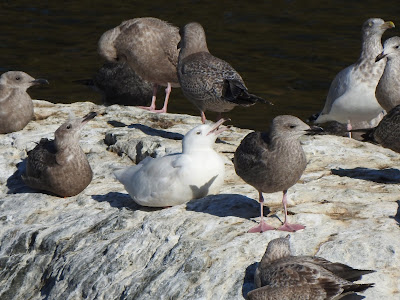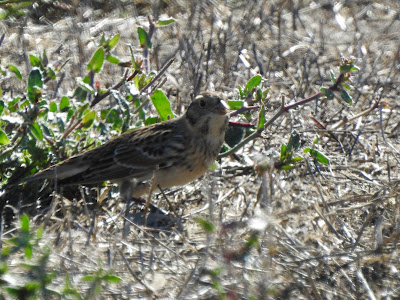I'm not the birder that gets excited about gulls. They are usually quite frustrating for me. Over the years I have managed to see most of the gull species that inhabit at least the lower 48 and a few of the arctic species as well. One that has eluded me until today is the world's second largest gull - the Glaucous Gull. Best described as a large, pale arctic gull, their range in the winter brings them just down into Northern California. They are actually seen with some regularity around the coast of Northern California but in the winter gulls tend to congregate in large numbers and finding the unusual one amongst hundreds, sometimes thousands of other gulls, each capable of showing you a variety of different plumages (cycles) depending on how old they are, is enough to send me a little bit around the bend.
Anyway, my wife Danette had an errand to run today up to the lovely hamlet of Chico and I went along because - well, I'm retired and a trip out of town sounded like fun. Once again, thanks to ebird, I was aware of a Glaucous Gull sighting at the Feather River Parkway and Fish Hatchery in Oroville which just happens to be on the way to Chico. Long story short, Danette said that this was the best rare bird sighting she had ever been a part of (we saw the bird before I even turned the car off). Painless, she didn't even have to get out! To her credit she did get out and we spent a few minutes watching and getting some photos. We also noticed why this was a good spot for gulls to congregate. All through the shallows we could see large salmon in various states of decay, some living, some not. They had completed their last journey and done their duty at the hatchery across the river and were now fulfilling their last duty in the circle of life - food for the scavangers.
A fun day out and a new bird to boot! Species number 573.







